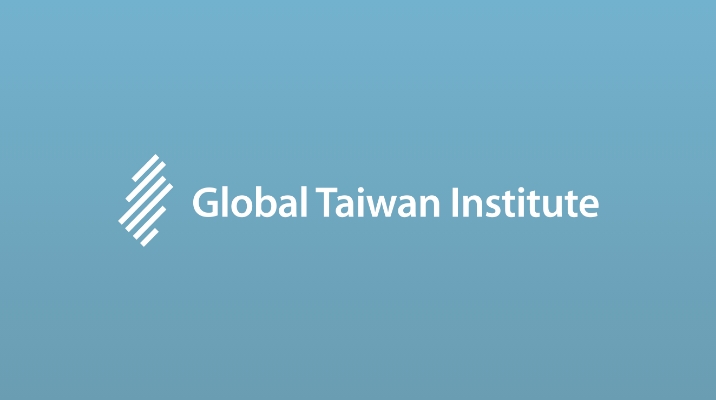Since the formal adoption of the “Three Warfares” (三戰) strategy by the Communist Party of China (CCP, 中國共產黨) and its Central Military Commission (CMC, 中央軍事委員會), the triad of public opinion, psychological, and legal warfare has served as cornerstones of China’s approach to gray zone conflict. Owing to consistent practice, Beijing has almost mastered the art of hybrid warfare that Sun Tzu (孫子) referred to in his treatise as “breaking the enemy’s resistance without fighting.” While recent agreements between New Delhi and Beijing have temporarily eased tensions along the Line of Actual Control (LAC), India remains vulnerable to Chinese aggression in other critical areas and must rethink its defensive strategies beyond the immediate concerns of border security. Here, Taiwan’s experience as an open, democratic society on the front lines of China’s “Three Warfares” for nearly two decades offers valuable lessons.
Shared Challenges from Beijing
Beijing’s cognitive warfare against Taiwan—executed via cyber intrusions, disinformation, and pseudo-legal territorial claims—is increasingly mirrored in its India strategy. China’s version of the “Three Warfares” strategy directed at India includes cyberattacks on energy infrastructure (some examples being in Ladakh, Mumbai and Telangana), state-driven disinformation on social media targeting national ethos, and Beijing’s pseudo-legal claims over Indian land. During the 2020 Galwan Valley skirmish, Chinese public opinion, as reported by state-media and the Chinese government, blamed India for the clash that led to calls for boycotting Chinese goods, downplayed Chinese casualties, and spread disinformation. Psychological warfare was evident in leaked satellite imagery of People’s Liberation Army (PLA, 中國人民解放軍) buildups on the India-China border and via releases of documentaries such as Motherland Engraved, which was published on the military channel of state broadcaster CCTV via Weibo on the two-year anniversary of the clashes in 2023. Legal warfare tactics continue through China’s renaming of locations in Arunachal Pradesh and issuing provocative maps.
In April 2022 a Chinese state-sponsored group repeatedly probed India’s power-grid organizations (State Load Despatch Centres), using ShadowPad malware on at least seven occasions. In 2021, a China-linked unit (“TAG-28”) targeted Bennett Coleman & Co (India’s largest media group, publisher of the Times of India) and India’s Unique Identification (also known as “Aadhaar”) database. Chinese hackers exfiltrated media files and intelligence from these networks, reflecting China’s interest in shaping narratives and gathering sensitive data. Similarly, a leaked intelligence report (from a PRC contractor i-Soon) describes how attackers stole data from India’s Ministries of Finance, External Affairs and Home (Interior) Affairs, as well as state institutions like the pension fund Employees’ Provident Fund Organisation (EPFO), Air India, telecom operator Bharat Sanchar Nigam Limited (BSNL) and the private healthcare chain Apollo Hospitals.
These are not isolated acts—rather, they reflect a coherent doctrine. India’s response, however, has remained largely reactive, siloed, and under-institutionalized, even though it faces this threat not just from China, but its “iron brother” Pakistan as well—and oftentimes together. In the aftermath of the April 2025 Pahalgam terrorist strike (and India’s retaliatory Operation Sindoor), Islamabad mounted a coordinated cyber-propaganda offensive—reportedly aided by China—to distort the narrative. Media analysts described this phase as a “parallel war” in the digital domain, where deepfakes, doctored videos and false advisories inundated social media. Crucially, China’s state media joined the fray, as China’s strategic silence on the issue allowed outlets like China Daily and other channels to republish unverified claims to celebrate the superiority of Chinese weapons used by Pakistan like the J-10C fighter jet and HQ-9 air defence system. In effect, Chinese networks amplified Pakistani misinformation and injected their own, aiming to undermine India’s credibility and sow confusion. These incidents illustrate the hybrid nature of modern conflict: kinetic actions by Pakistan were followed by a cognitive offensive blending Chinese-aligned platforms and local proxies.
By drawing from Taiwan’s decentralized, civic-minded, and tech-savvy model of resilience, India can protect its national interests and advance India-Taiwan security cooperation within the confines of India’s “One-China Policy.” Cybersecurity and disinformation countermeasures offer immediate, actionable areas for engagement to lay the groundwork for a robust, unofficial partnership. As New Delhi seeks to evolve a comprehensive strategy to confront China across cognitive domains, Taiwan offers a compelling model of layered, non-kinetic deterrence. Can India build a similar strategy—one that looks beyond border skirmishes to meet the full spectrum of Chinese aggression?
Taiwan’s Successful “Resilience as Deterrence”
Taiwan exemplifies the logic of “resilience as deterrence”—wherein societal robustness, technological advantages, and decentralized adaptability serve to complicate adversarial coercion. Taiwan’s remarkable resilience against Beijing’s economic coercion and persistent military intimidation offers India a holistic, layered template for countering the full-spectrum pressures of Chinese hybrid aggression. Despite the PRC’s efforts to marginalize Taiwan through trade restrictions and diplomatic isolation, Taipei has pursued a strategy of “strategic hedging”—diversifying trade partnerships while retaining linkages that afford leverage, especially through its dominance in advanced semiconductor production. This calibrated balance between autonomy and interdependence allows Taiwan to avoid dependency without full economic decoupling. The Taiwan Semiconductor Manufacturing Company (TSMC, 台灣積體電路製造股份有限公司) alone wields strategic leverage that even China cannot afford to ignore. In contrast, India remains dependent on Chinese imports for critical sectors such as pharmaceuticals, telecommunications, and electric vehicles. New Delhi must develop similar economic insulation strategies.
India’s current initiatives, such as the Supply Chain Resilience Initiative (SCRI), the China Plus One strategy, and semiconductor manufacturing incentives have yet to produce visible returns. Delhi’s economic deterrence must constitute a long-term, institutionalized strategy rather than a set of reactionary moves to geopolitical crises. In this respect, India-Taiwan economic relations offer massive untapped potential.
Facing China’s constant military intimidation, Taipei has concurrently adopted an asymmetric balancing posture that prioritizes agility, survivability, and cost-effective deterrence over conventional force parity—evident in its investment in coastal defense missile systems, drone warfare, and anti-access/area-denial (A2/AD) strategies. The recent unveiling of Taiwan’s Hai Kun-class indigenous submarine, designed to counter Chinese naval incursions, is a case in point. While India has begun investing in asymmetric warfare—such as deploying swarm drones, enhancing electronic warfare capabilities, and expanding its special forces’ operational readiness—there is untapped potential for India-Taiwan collaboration in areas like drone technology, cyber deterrence, and cognitive warfare strategies, which can reinforce both states’ resilience against Chinese gray zone tactics. For instance, a Chinese unit, “RedFoxtrot” (linked to military intelligence), is known to systematically target Indian defence and communications networks.
Hence, most importantly for India, it is Taiwan’s cyber strategy that creates an adaptable resilience model. Through a mix of disinformation campaigns, diplomatic isolation, and economic coercion, Beijing consistently seeks to destabilize Taiwanese democracy and weaken public confidence. And yet, Taiwan has survived—and adapted. Its resilience stems from a multi-pronged response—rooted in asymmetric defense, cyber and cognitive security, public education with focus on media literacy against cognitive warfare, and international/regional partnerships. Taiwan’s leadership has treated narrative defense as proactive competition: the ruling party actively crafts cross-platform content strategies and mobilizes both government agencies and grassroots volunteers to counter enemy propaganda. India urgently needs to acknowledge such resilience in Taiwan’s current model and learn from it to respond to hybrid warfare tactics.
India’s Delayed Responses
New Delhi has traditionally approached its China challenge through a conventional security lens, yet Beijing’s India strategy now spans data infrastructures, public narratives, economic dependencies, and legal contestation in global fora. Taiwan’s approach offers India an alternative model. The trajectory of Taiwan’s partnerships with democratic actors in the areas of cybersecurity (e.g., the CODE exercise with the United States), intelligence-sharing (formidably developed under the director of the National Security Bureau [NSB, 國家安全局], Tsai Ming-yen [蔡明彥]), and national resilience highlights pathways that India can emulate. Indeed, India already maintains frameworks for these kinds of partnerships, such as via the Quad cybersecurity-partnership, India-ASEAN cyber policy dialogue, and cyber-focused alignment with Israel, the United States, Russia, and others. Domestically, however, while Taiwan’s national curriculum may not translate easily to India’s federal structure, state-level pilots—in innovation-driven states like Kerala or Delhi—could include joint programs with civil society organizations (CSOs), modelled after Taiwan’s CSOs focusing on democracy. This approach would allow experimentation without national legislative overhaul.
Facing over 2.4 million cyberattacks daily in 2024, Taipei responded by institutionalizing cyber threat intelligence-sharing with partners (notably the United States), passing the Organization Act of the Administration for Cyber Security, Ministry of Digital Affairs in 2022, planning a joint cybersecurity center, and launching a national cybersecurity strategy. In contrast, India’s cybersecurity architecture remains fragmented due to the absence of a comprehensive national cybersecurity strategy. India does maintain the National Critical Information Infrastructure Protection Centre (NCIIPC) and the Indian Computer Emergency Response Team (CERT-In)—which together constitute the primary nodes of India’s reactive and preventive cybersecurity machinery. However, their mandates remain disconnected, and legislative tools, like the National Cybersecurity Policy of 2013 and the relatively broad provisions of the Information Technology Act of 2000, are outdated. Though an Indian national cybersecurity strategy remains elusive, New Delhi could establish a specialized “Cognitive Security Task Force” under the National Security Council Secretariat (NSCS), inspired by Taiwan’s centralized model. A standing inter-agency “Cognitive Security” cell could be created, linking cyber/intel branches (Military Intelligence, RAW/MEA, IB/MHA, etc.), the National Cyber Coordination Centre, and state cyber cells. This body would gather and analyze threat data (mirroring Taiwan’s research unit), run joint drills, and disseminate guidance. Such institutionalized cognitive defenses—spanning ministries to state capitals—would harden India’s social fabric. By following Taiwan’s integrated model of cyber–information resilience (rather than siloed, ad hoc reactions), India can better deter coordinated Chinese/Pakistani info-war campaigns and preserve public confidence.
A New Pathway for India-Taiwan Cooperation
Beijing’s disinformation campaigns have sought to erode domestic trust in Taiwan’s government by manipulating social media narratives and polarizing domestic discourse. In response, Taiwan has institutionalized real-time fact-checking and integrated media literacy into its education system, thus reinforcing societal resilience. India, facing similar challenges—particularly around elections and national security—has responded through initiatives like Press Information Bureau (PIB) Fact Check—that worked overtime during the recent Pahalgam-Operation Sindoor period—and financial fraud monitoring. Yet, the efforts remain embryonic. India should deepen its engagement with Taiwan’s counter-disinformation practices through third-party democratic coalitions such as the Global Cooperation and Training Framework (GCTF)—a platform it already accesses. Such triangulated fora enable silent policy transfer without formal bilateral relations. Sessions may cover rapid-response models, national security council-led coordination, and election protection mechanisms.
New Delhi’s cyber-security partnership with Taiwan could strengthen deterrence while remaining within the bounds of plausible deniability. While formally adhering to its One-China Policy, India retains space for behind-the-scenes cooperation with Taiwan. Strategic ambiguity should be maintained, framing engagement in the language of digital democracy and rule-of-law governance. Positioning these efforts within broader narratives of democratic resilience protects India diplomatically while enabling substantive gains. Furthermore, Track II and academic collaborations provide low-visibility, high-impact avenues for policy transfer.
The main point: Taiwan’s institutional responses to cognitive warfare—rooted in whole-of-society resilience, public education, and a forward-facing strategic outlook—offer critical lessons for India as it confronts similar challenges in safeguarding democratic integrity against authoritarian influence.



